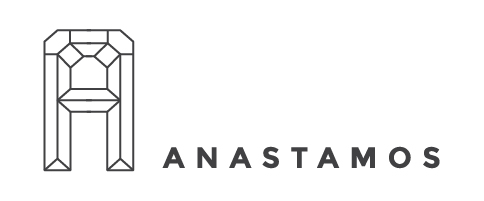The Photographer’s Responsibility

I was in Cameroon as a volunteer with Health Projects Abroad as a part of the administrative team. We were working alongside a group of Optometrists that moved around the English-speaking Mundemba region, distributing prescription glasses in small villages and sleeping in the same villages as guests of the local Chiefs. It was my first overseas voluntary role, and so, camera in hand, I left the shared house to see what I could record in my new environment.
That sounds easier than it actually was. As a black female volunteer, I didn’t have the same privileges afforded to me as my white counterparts. They were often greeted with respectful smiles and nods from the officials. This was not my experience, as I had already been stopped by the police who had threatened to confiscate my rolls of camera film. They were suspicious of me and wondered why I wanted to take photographs in their small village. In order to have some evidence for those who had funded this experience, and to save the photographs I had already taken, I took to posting my films and audio cassette tapes back to London.
Whilst walking around the town on this particular day, I saw four young girls carrying large bundles on their heads. I had come to learn that the large bundles signaled that it was washing day. This felt like a project that I could photograph for my collection. As I followed them, I could hear the squishing and pounding of the clothes alongside the chatter and the laughter, which was coming from the riverbank, close by. I wanted to capture these very natural scenes which took place in villages all over the world.
I climbed through the bushes that led to the river and as I walked along the bank, I noticed the girls watching me. I realized I must have stood out as I was the only one there not washing, wearing western clothes and carrying a camera. They played and laughed, looking up every now and then to see what this black woman with the camera would do. I had really wanted to take a series of natural shots. But, as any photographer knows, the worst kind of ‘natural pictures’ come when the subject sees you and tries to act naturally! I stooped down, trying to make myself small and to show that I was also interested in the surrounding hills and river.
These were young women who looked between the ages of twelve and sixteen. They were small framed with womanly parts just beginning to show. In approaching what looked like one of the older women, I asked her if I could take a photograph. I wasn’t sure what her English proficiency was, so I pointed to my camera. She laughed and nodded in agreement. In response to what she thought I wanted, she and a few other girls close by lowered their tops, revealing their young breasts. I was horrified and shook my head whilst repeatedly saying No! No! No! That was not the picture I wanted. These young girls looked confused. They seemed embarrassed which had not been my intention.
In Feminism is for Everyone, bell hooks (2000) states that
Before women’s liberation, all females young and old were socialized by sexist thinking to believe that our value rested solely on appearance and whether or not we were perceived to be good looking, especially by men.
I suspected that they may well have revealed their breasts in the past for a dollar, or two. I had seen a tourist in Cameroon and in Ghana slip an American dollar to children (and to adults) after their bodies had been used as props for their photographs. These young girls no doubt wondered why I didn’t want the same image. After all, wasn’t this what western tourists like me wanted? People who sounded like me, and carried expensive cameras like me, which would have paid school fees for years and probably covered the cost of leaking roofs, fixed cars or financed a business venture. Wasn’t this what we wanted? They had learned that their bodies were commodities, merely a means to an end.
I looked at their innocent faces as they drew their tops back up to cover their breasts. I didn’t take any pictures. They were disappointed. I can’t even remember if I gave them any money as I made my way back up the hill and through the bushes. I was distraught. Traumatized.
Did they understand racism and the racist ways in which black women’s bodies had been portrayed? Did they care? They might not know about Sara Baartman and the Hottentot Venus freak show where black women with large bottoms were placed on display in cages in the nineteenth century. They might not know that these same women probably influenced the high bottom dresses of the Victorian era. They would not know about the #metoo movement which was to come in the twenty-first century calling out men for their racist and sexist behaviours. Maybe they didn’t know of the women’s bodies who had been used and abused, accessed without permission by slave owners, family, friends, and enemies. They might not know. But I did.
In Sonia Sontag’s classic On Photography (1979), she claims that
There is something predatory in the act of taking a picture. To photograph people is to violate them, by seeing them as they never see themselves, by having knowledge of them they can never have, it turns people into objects that can be symbolically possessed.
For me, this is an interesting quote as I can see how she could come to her conclusion. There are many instances where photography has been used for the purpose of violating others. Photographs can be empowering as well as predatory. On that day, I chose not to take any photographs. Not to bring an image that was already accepted and widespread. The image I was offered did not sit well with me and I would not be a predator of these young girls. The digital age had not yet arrived where an image could be shared a thousand times in a few seconds, but I still understood the power of images that portrayed black women as sexual beings in a world where this was a regular occurrence.
Thirty years later, I find myself on a small road in Bali and I am rooted to the spot. I see the same image. It is of a young innocent Asian girl with her breasts revealed. It is in the window of an art shop. She is there with her eyes averted, looking down in that strange juxtaposition of innocence and availability.

Opening a magazine or book, turning on the television set, watching a film or looking at photographs in public spaces, we are most likely to see images of black people that reinforce and reinscribe white supremacy
– Hooks, 1992, Black Looks, race and representation
African and other women of colour have had their bodies loved, hated and objectified. The fetish, voyeuristic experiences have removed African women’s bodies form what is considered ‘normal’ by a world where the minority white standards, are taken as the benchmark upon which everyone else is measured. The lip and buttock enhancing injections that became fashionable in the Nineteen-Nineties celebrate the same attributes of these women that were once despised and ridiculed. The fashion world, and whatever the top models do, influences thousands of women.
As I reflected on my experience in Cameroun and the image that I stood before in Bali almost thirty years afterwards, the question that I had to ask myself is what responsibility do we have as photographers? As artists, we bring a perspective of the world through what we choose to share. Images are powerful and designers spend days, weeks and months agonizing over the right image for a product, service or brand. They do this because an image can transcend cultures, gender, and religions. Unlike words, images can convey the same thing to everyone. If you are able to get the right image, it can be lucrative and powerful. Check out any popular brand and you will see this.
In 2019, almost everyone has a mobile phone and many people regard themselves as ‘photographers.’ They have experienced no training and, unlike people like myself, they have not had the privilege and honour to be in a room with photographers discussing the ethics of this profession. It is unfortunate as photographs are now taken, copied and shared without a second thought. Whilst the rules of intellectual property and Copywrite exist, this new digital era, makes the protection of these rights harder and harder to uphold. Peoples images appear on social media and in publications without their permission. In spaces where people go to ‘relax’, there are cameras capturing and sharing these moments.
What do I see as the solution? As a female African Caribbean British conscious and conscientious photographer, I have a responsibility to do the following:
• Bring positive, affirming images of black people and especially of black women.
• Change the story of our experience with images that show us as diverse human beings.
• Understand the power of my camera and the messages which I choose to share with the world.
References
Hooks, Bell, Black Looks, Race and Representation, Turnaround Books, 1992
Hooks, Bell, Feminism is for Everybody, Pluto Press, 2000
Sontag, Susan, On Photography, Penguin, 1979
Visual Artist
C. R. Resetarits is a writer and visual artist. Her art and collages have appeared in dozens of literary magazines, including the present covers of the Florida Review and Falling Star.
crresetarits.wordpress.com
www.instagram.com/crresetarits/
twitter.com/CRResetarits
Author Biography
Mbeke Waseme is a writer, born in the UK to Jamaican parents. Her first poetry book, Exploring all of me was first published in 1987 and was republished in 2019. She is also the author of Make the Changes, Feel the joy and How to Work and Live abroad successfully. Mbeke is currently living in the UK and working on an anthology of writing by women who have lived and worked abroad.


Judy McClune
February 13, 2020 at 8:15 amThank you for an enjoyable, insightful, engaging article and for sharing an Artist’s perspective.
I shared your horror at the ease in which the young women were prepared to bare themselves in order to accommodate what they perceived you wanted and wished you had been able to convey this in a way that would somehow empower them to be more discerning on a subsequent occasion. Is this the Westerner in me?
This article will certainly inform how I receive any future consumption. Thanks again.
Melloney Marcella Richards
February 13, 2020 at 9:11 amA really interesting, thought provoking piece, especially during this period of social media where we snap and post without asking for permission. I also like that fact that Mbeke highlights what her responsibilities are to her community as a photographer, we need to see others in the media take on this idea social responsibility when writing or posting images.